Stepping onto the pickleball court for tournament play is a whole different ball game. It’s not just about having a strong serve or a quick return anymore. Players who want to dominate need to up their strategy game, turning every match into a chess match where every move counts.
Advanced pickleball strategies can transform a good player into a tournament champion. It’s all about outsmarting the opponent, exploiting weaknesses, and making every shot with purpose. Whether it’s mastering the art of the dink shot or perfecting your positioning, these tactics require practice, patience, and a bit of psychological warfare. Let’s dive into how players can elevate their game beyond the basics and truly shine during tournament play.
Mastering the Dink Shot
In the realm of pickleball, Mastering the Dink Shot is akin to wielding a silent but deadly weapon. This nuanced, gentle shot lands softly in the opponent’s non-volley zone, also known as the kitchen, making it difficult for them to return with power. The beauty of the dink lies in its ability to force the opponent to hit upwards, giving the player in control a chance to prepare for a more aggressive follow-up shot.
To truly harness the power of the dink shot, players should focus on a few key aspects. Firstly, precision is paramount. The goal isn’t just to get the ball over the net but to place it strategically where it’s most challenging for the opponent to make a vigorous return. Regular practice in targeting specific areas within the kitchen can drastically enhance a player’s effectiveness in using the dink shot during tournaments.
Another critical factor is the player’s stance and paddle readiness. A low, balanced stance with the paddle held in front of the body allows for quick adjustments and precision in directing the dink shot. It’s also essential for players to anticipate the opponent’s response, readying themselves for a swift defensive or offensive move. This level of preparedness not only improves the execution of the dink shot but also boosts the player’s confidence in employing this strategy under tournament pressure.
Engaging in drills that simulate real-match scenarios can be incredibly beneficial. Partners can practice dinking back and forth, trying to outmaneuver each other by varying the speed, direction, and depth of their shots. These exercises not only improve hand-eye coordination and shot accuracy but also teach players how to read their opponents’ movements and react accordingly.
| Key Component | Description & Benefit |
|---|---|
| Precision | Targets specific areas within the kitchen to challenge the opponent. |
| Stance & Paddle Readiness | Enables quick adjustments and precision. |
| Drills | Simulates real-match scenarios for better accuracy and response. |
Incorporating the dink shot into a player’s strategic arsenal requires patience and practice. It’s not just about the physical execution but also understanding when to use the dink shot to its full advantage. Timing is critical, as is the ability to remain composed under pressure.
The Importance of Positioning

In the highly strategic game of pickleball, positioning on the court is just as crucial as mastering individual shots like the dink. Effective positioning enables players to cover the court efficiently, anticipate their opponents’ shots, and execute their strategic plays with precision. A well-positioned player can significantly influence the flow of the game, making it easier to control rallies and put pressure on the opposition.
One key element of optimal positioning is maintaining a stance close to the baseline when not actively volleying. This placement allows players to react to a wider range of shots from their opponents, particularly deep serves and returns. It’s essential, however, to move forward quickly when the opportunity arises to seize control of the net. Dominating the net area, or the ‘kitchen,’ limits the opponents’ shot options and increases the chances of forcing errors.
Successful pickleball players understand the importance of lateral movement and positioning in relation to their partner in doubles play. Coordination and communication between partners ensure that the team can cover the entire width of the court without presenting gaps for opponents to exploit. This side-by-side positioning, often referred to as ‘stacking,’ enables each player to focus on half of the court, thus improving response time and defensive coverage.
Another aspect of advanced positioning is the preemptive adjustment based on the opponents’ likely next move. For instance, if an opponent is positioned to hit a backhand, a player might shift slightly to cover the most probable angles of return. Such adjustments require keen observation, rapid judgement, and familiarity with common pickleball strategies and tendencies.
Practicing drills that focus on court coverage and quick positioning shifts can vastly improve a player’s ability to stay optimally positioned throughout a match. These drills often incorporate scenarios that mimic in-game situations, challenging players to read their opponents’ movements and react accordingly, all while maintaining balance and readiness to strike.
Integrating the dink shot into strategic positioning adds an additional layer of complexity to the game. Knowing when to dink and when to position for a power shot can confuse opponents and create scoring opportunities. Effective use of the dink shot from an advantageous position can force opponents out of their comfort zone, often leading them into making unforced errors.
Exploiting Weaknesses in the Opponent’s Game

In tournament play, understanding and exploiting the weaknesses in an opponent’s game can significantly elevate a player’s chances of winning. This strategy requires keen observation, adaptive gameplay, and the psychological agility to apply pressure where it’s most effective.
Observation and Analysis
The first step in exploiting weaknesses is thorough observation. Players need to pay close attention to their opponents’ responses in various situations. This includes noting how they handle pressure, their weaker hand, difficulty with certain shots like deep serves or soft dinks, and any tendency to favor one side of the court. It’s also crucial to observe their body language and signs of fatigue or frustration which can offer insights into their current mental state.
Adaptive Gameplay
Once weaknesses are identified, players must adapt their gameplay to target these areas. This might mean consistently serving to the opponent’s weaker backhand, using a variety of spins to exploit poor footwork, or employing a lob strategy against opponents who struggle with overhead shots. Adaptive gameplay forces the opponent out of their comfort zone, making it harder for them to predict and counteract plays.
Psychological Pressure
Applying psychological pressure is another effective strategy. By repeatedly targeting an opponent’s weak spots, a player can induce stress, leading to errors and a decline in performance. This doesn’t mean compromising sportsmanship but rather using strategic plays to gently amplify the mental demands of the game on the opponent.
Tactical Shifts
Players should be ready to make rapid tactical shifts as opponents might adjust their strategy to counteract targeted weaknesses. This game of cat and mouse requires flexibility and the ability to quickly devise new plans mid-game. It’s a dynamic process of action, reaction, and counteraction, always staying one step ahead.
Key Strategies
To put these concepts into practice, here are some actionable strategies:
- Serve Variability: Mix up serves to keep opponents guessing and exploit weaknesses in their return game.
- Placement Over Power: Aim shots with precision to weaker sides or away from opponents rather than relying solely on power.
- Mental Fortitude: Maintain a calm demeanor to avoid showing your own weaknesses, keeping the psychological advantage.
- Conditioning: Work on physical conditioning to exploit opponents’ fatigue, especially in lengthy matches.
Developing a Strong Mental Game
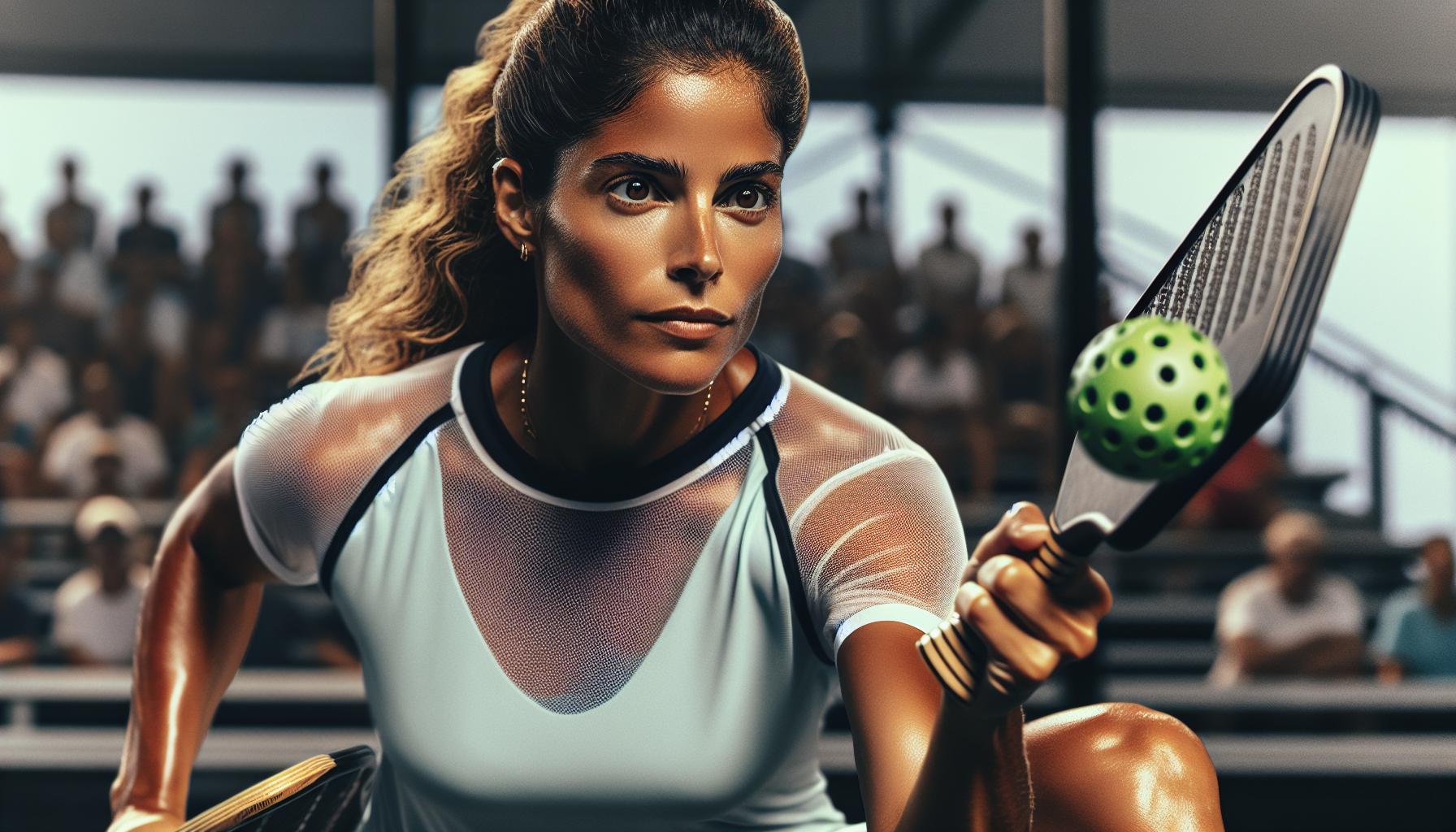
In the heat of tournament play, pickleball demands not only physical agility but also a steadfast mental game. Players who master their mental strategy gain an invaluable edge over their opponents. Mental toughness involves maintaining focus, managing stress, and staying positive, even when the scoreboard isn’t in their favor.
Focus is paramount in pickleball. With games often swinging back and forth, players need to keep their attention locked on the present point, not the last error or potential match outcomes. Techniques such as visualization and deep breathing can help players center themselves, reduce distractions, and enhance their in-game performance. A focused player is more likely to anticipate an opponent’s moves and react swiftly, turning tight situations to their advantage.
Stress management plays a critical role in any athlete’s toolbox, and pickleball players are no exception. High-pressure situations can lead to tightened muscles and rushed decisions, affecting game performance. Successful players develop routines that help them stay calm under pressure. This might include pre-serve rituals or positive self-talk to combat negative thoughts. Learning to view challenging situations as opportunities rather than threats can dramatically improve how a player performs when the pressure mounts.
Maintaining a positive attitude is crucial, especially in a sport where momentum can shift rapidly. Players who keep a positive outlook can recover from setbacks more quickly, staying in the game mentally and physically. Encouragement from teammates, celebrating small victories, and learning from mistakes without dwelling on them are strategies that foster a resilient mindset. It’s important for players to set realistic goals for improvement and to acknowledge their progress, keeping motivation high and self-criticism in check.
Adaptability is another component of a strong mental game. Conditions on the court can change, opponents can switch up their strategies, and unexpected challenges may arise. Players who can adjust their mental approach and strategies on the fly are more likely to overcome adversities. This includes being patient, waiting for the right moment to strike, and not forcing plays that aren’t there. Accepting that not every shot will be perfect and that errors are part of the game helps players remain mentally flexible and focused on the next opportunity.
Perfecting the Third Shot Drop
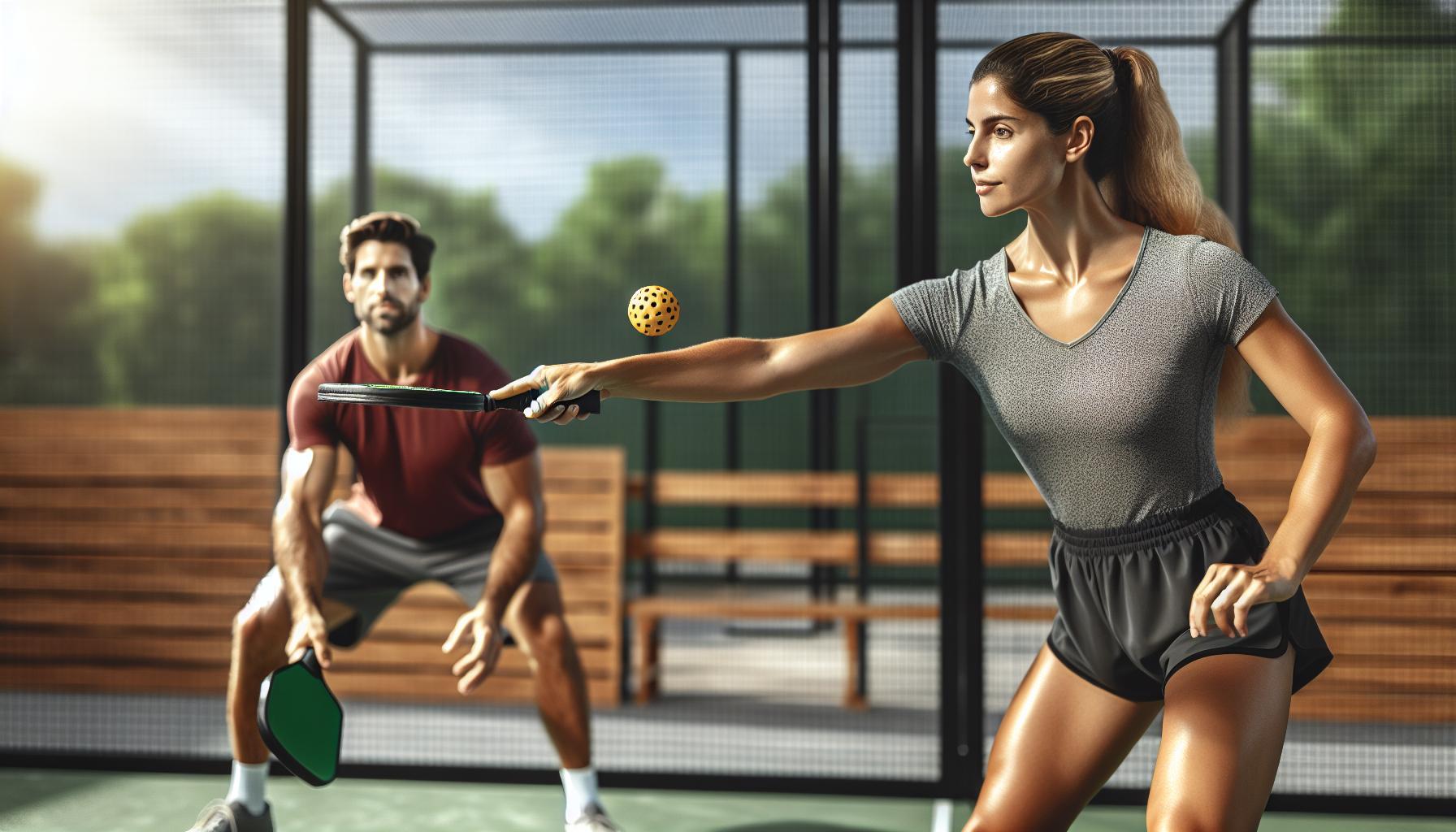
In the realm of pickleball, the third shot drop is a pivotal technique that can significantly impact the dynamics of a game. This skillful shot is executed after the serve and return, aiming to drop the ball softly into the opponent’s kitchen, or non-volley zone. Mastering this shot requires precision, control, and timing, making it a formidable strategy in tournament play.
The essence of the third shot drop lies in its ability to transition the serving team from a defensive to an offensive position. By landing the ball in the non-volley zone, it forces opponents to hit an upward shot, providing the serving team an opportunity to move closer to the net. Control is paramount; the ball must be hit with just enough power to clear the net but not so much that it travels too deeply into the opponent’s court. This delicate balance creates challenges for opponents while opening the door for the serving team to seize control.
Several key factors contribute to the successful execution of the third shot drop:
- Precision and Practice: Like any refined skill, perfecting the third shot drop requires extensive practice. Players should aim for consistency in hitting the ball into the desired zone of the court. Drills focusing on various angles and heights help develop this precision.
- Observation of Opponents: Effective players assess their opponents’ positioning before deciding on the angle and depth of the third shot drop. If opponents are positioned further back, a slightly deeper shot may be beneficial, whereas a closer positioning may require a shorter, tighter drop.
- Footwork and Positioning: Proper footwork is essential to position oneself optimally for hitting the third shot drop. Players must anticipate the return and adjust their stance accordingly, ensuring they are balanced and ready to execute the shot with control.
- Mental Acuity: The decision to execute a third shot drop should be based on a quick assessment of the current game situation. Mental acuity plays a significant role in deciding whether the conditions are right for this strategic move or if an alternative shot would be more advantageous.
Practicing the third shot drop in different game scenarios is crucial for its successful integration into match play. Players can benefit from drills that simulate real-game pressure, with varying speeds and angles of returns. Incorporating this shot into doubles play also requires clear communication and coordination with one’s partner, making practice in a team setting invaluable.
Conclusion
Mastering advanced pickleball strategies for tournament play isn’t just about honing physical skills; it’s a holistic approach that combines mental toughness, strategic positioning, and exploiting opponents’ weaknesses. By integrating the dink shot with effective court positioning, players can keep their opponents guessing and create scoring opportunities. Observing and targeting opponents’ vulnerabilities requires not only keen analysis but also the adaptability to switch tactics on the fly. Mental resilience, the ability to stay focused and positive under pressure, is as crucial as perfecting the third shot drop for transitioning into offense. With practice, observation, and a strong mental game, players can elevate their performance in tournaments. Remember, success in pickleball isn’t solely in the execution of skills but in the strategic interplay of mind and body on the court.

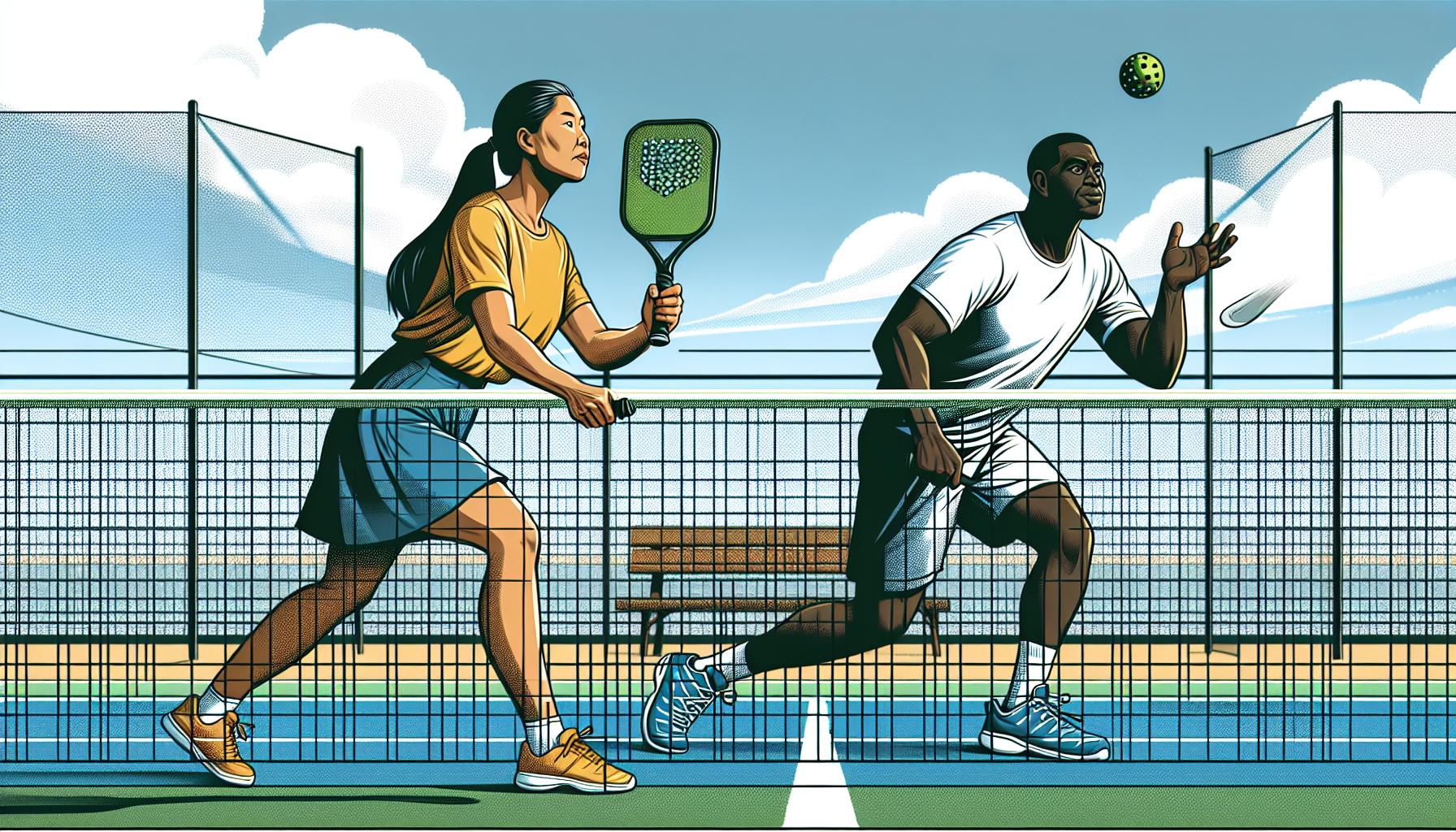









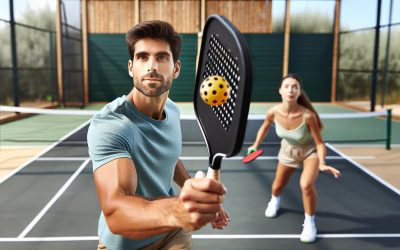
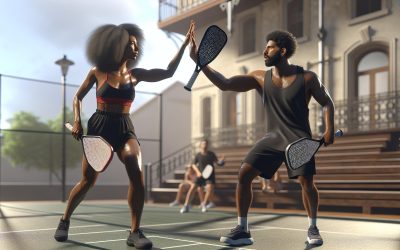
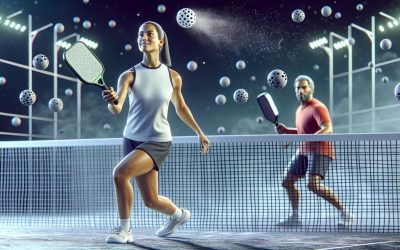
0 Comments